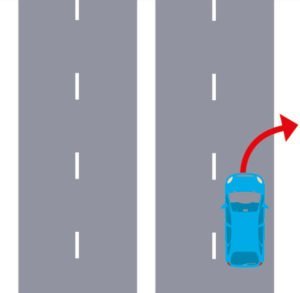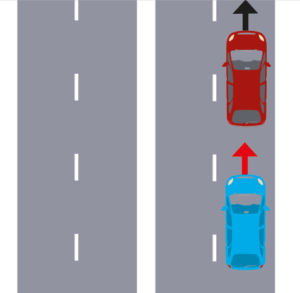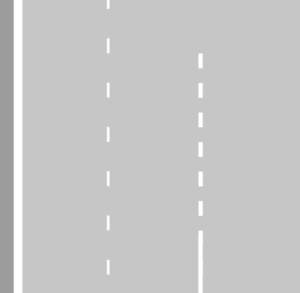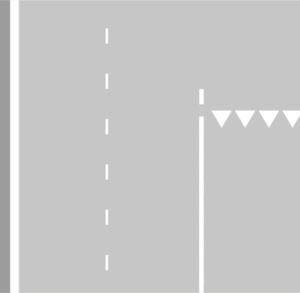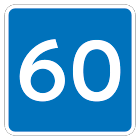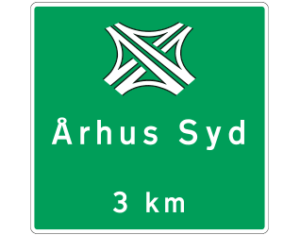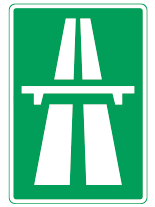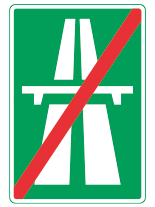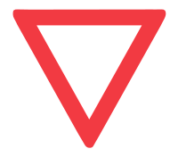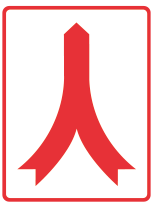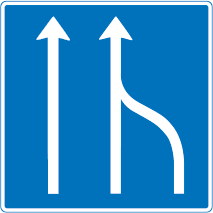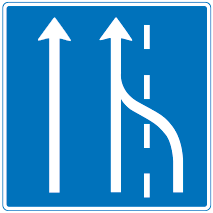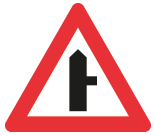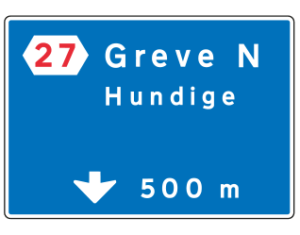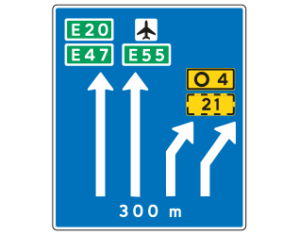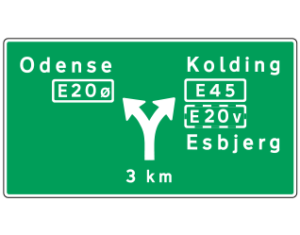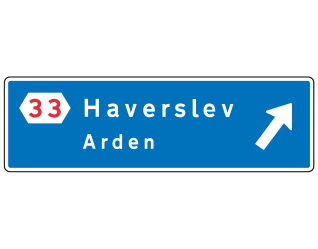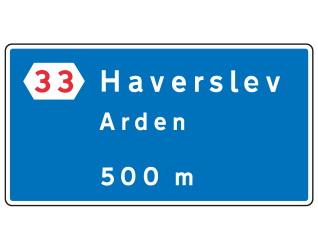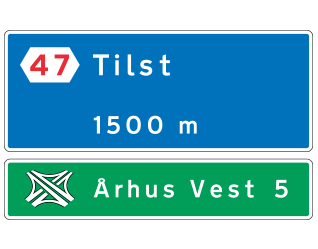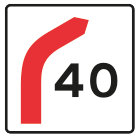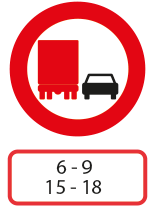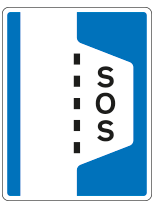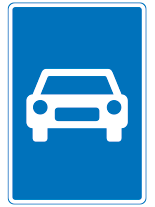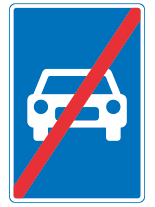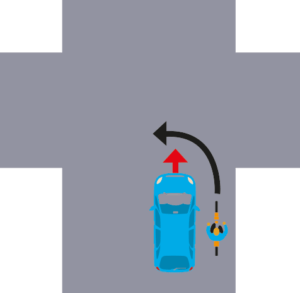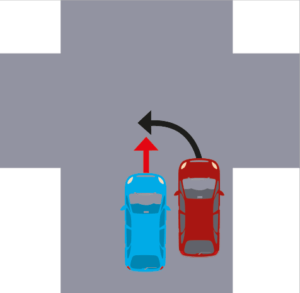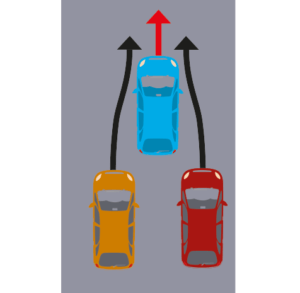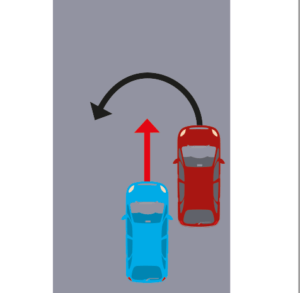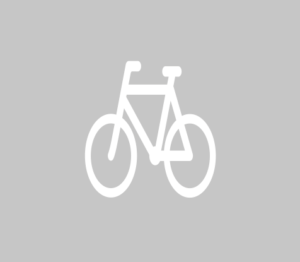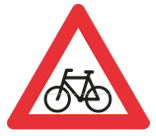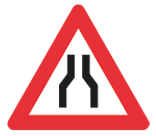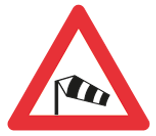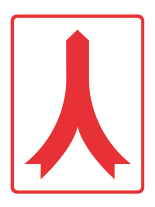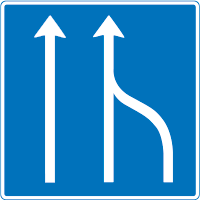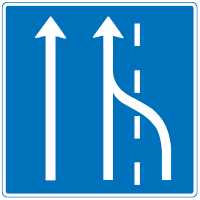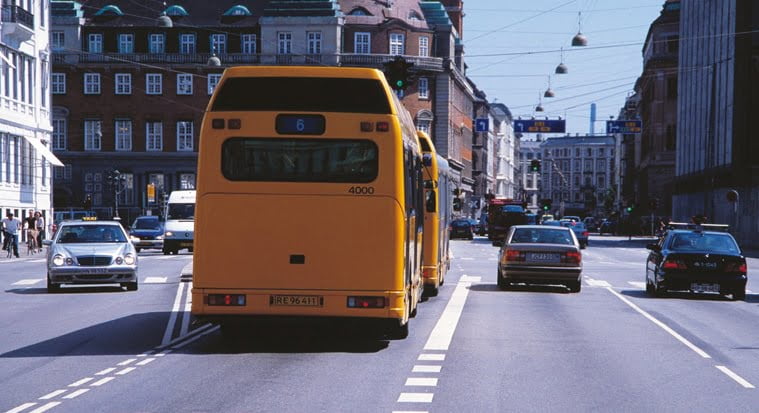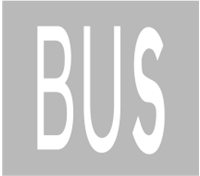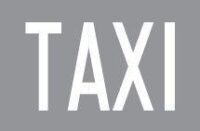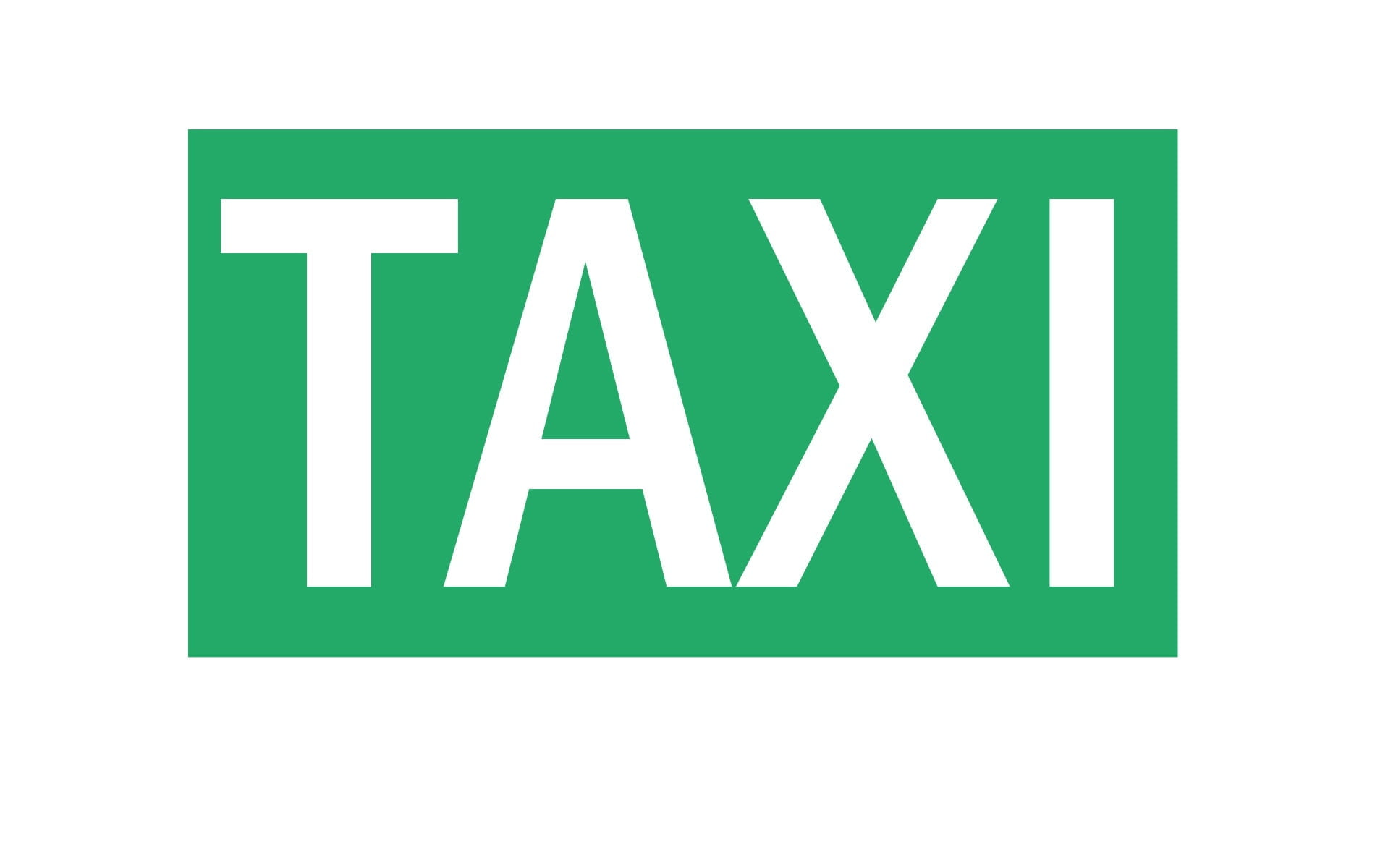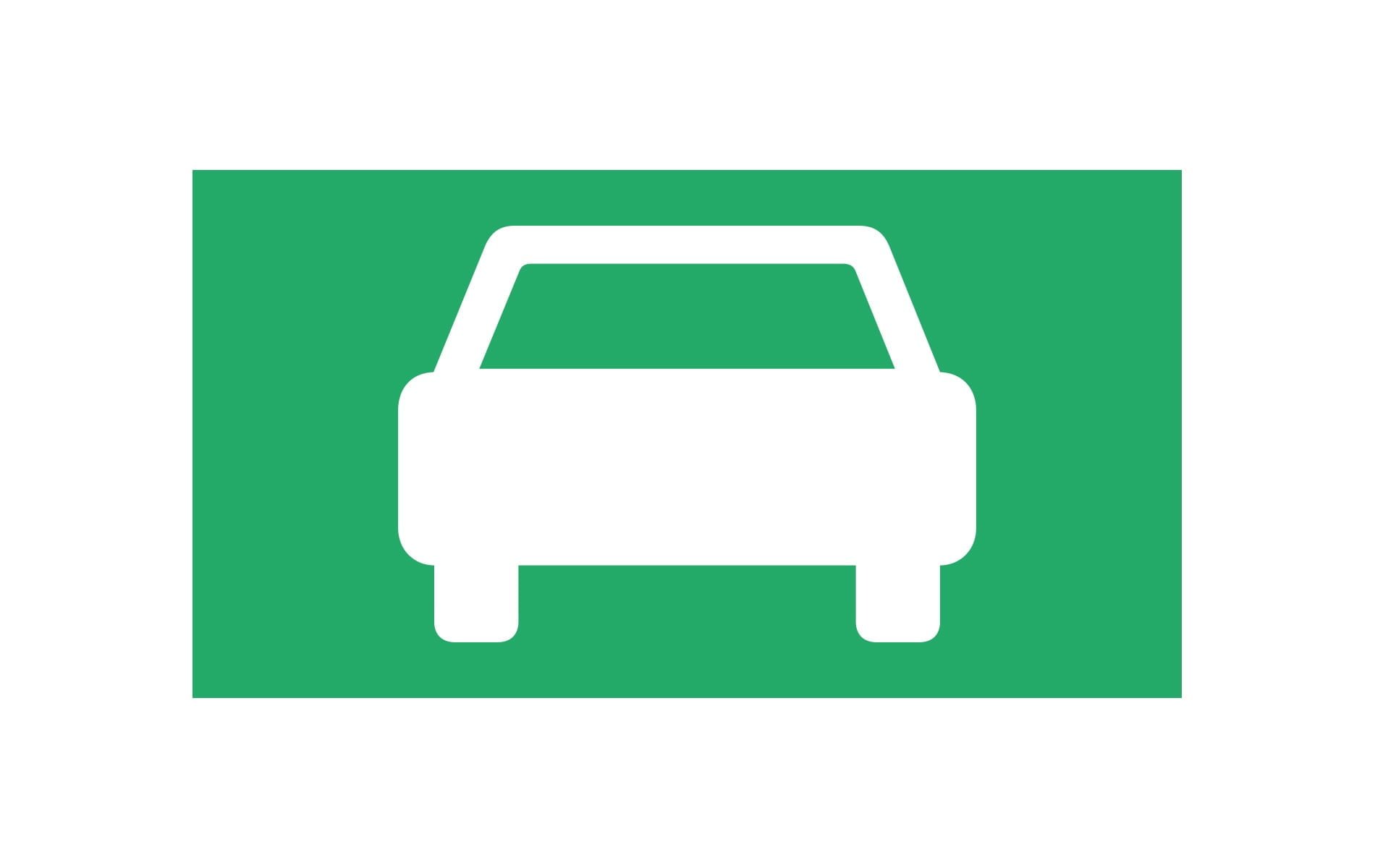Passenger car
Driving school
theory book
to category B
Sections 7.16 - 7.17: Mmanoeuvres on motorways and in heavy traffic
16. driving on motorways
Risks and accidents
The risk conditions on the motorway are mainly related to its special construction characteristics, such as large road width, gentle curves and hills, no buildings along the road, good visibility and high speed.
The typical risk factors here are underestimation of your own and others' speed - and thus poor orientation, overestimation of distances, too short safety distances, underestimation of crosswinds, fatigue and reduced attention after long periods of driving, speed blindness and overestimation of the car's manoeuvrability.
These risky conditions lead to many accidents. The most common accidents are single-vehicle accidents with drivers on the motorway or at entrances and exits.
Another typical type of accident is rear-end collisions or rear-end collisions with the car in front. These accidents happen because the distance to the car in front is too short or because cars in a queue catch up faster than you expect.
Only motor vehicles that are allowed and capable of driving at least 50 km/h are allowed on motorways and slip roads. The maximum speed limit on motorways and slip roads is 130 km/h. Cars with a trailer maximum 80 km/h. (can be 100 km/h according to special rules).
You may only enter the motorway via an access lane or at the beginning of the motorway. Similarly, exit the motorway only via exit lanes or at the end of the motorway. In the event of unexpected congestion or other immediate danger on the motorway, you must use hazard warning lights to draw the attention of drivers behind you to the danger. The same can be done outside densely populated areas. Crossing the central reservation, turning, reversing, reversing, stopping and parking are not permitted on motorways, on access and exit lanes or on grass verges and other areas near the motorway. Stopping at an emergency telephone is only permitted if you need to call for help. In this case, you must try to stop outside the carriageway. Repairing the vehicle on a motorway or expressway may only be carried out if it is necessary to remove the vehicle from the motorway or expressway as soon as possible. If a vehicle needs to be repaired on the motorway or expressway and it is necessary to use part of the carriageway to do so, the police must first be contacted for permission. The police can be contacted by dialling 114. This is not necessary if the entire vehicle is in the emergency lane.
When carrying out repairs on site or removing a broken-down vehicle in cases requiring the use of the part of the carriageway on a motorway or expressway, the lane to be used must be marked by a barrier. On a motorway with three or more lanes in the same direction, vehicles may
with trailers, vehicles with a total length of more than 7 m, may only drive in one of the two rightmost lanes, unless they are preparing a left turn at the end of the motorway. Towing is prohibited on the motorway.
Orientation and manoeuvring
You need to learn how to recognise and manage the following hazards when driving on motorways:
- Tailgating on the approach lane, keeping too short a distance.
- Drivers in the approach lane who do not use the option to enter the motorway, but stop.
- Tailgaters on the slip road who may decide to pull in before you have even entered the motorway.
- Motorway drivers coming from behind and may be hidden in blind spots.
- Drivers on the motorway showing signs that they don't want to help make your driveway easier.
- Signs of unexpected reactions from drivers ahead when exiting, splitting or merging motorways.
- The same hazards as when manoeuvring on ordinary roads, to the extent that they can now occur on motorways.
- Rear-end traffic on a combined approach and exit lane that can be hidden in blind spots.
Approaching with merge - here's how to do it
- Familiarise yourself with the visibility and access conditions.
- Are there front and rear drivers?
- Adjust your speed to the length, rise or fall of the approach and merge lane and to the speed of drivers in the nearest lane on the motorway.
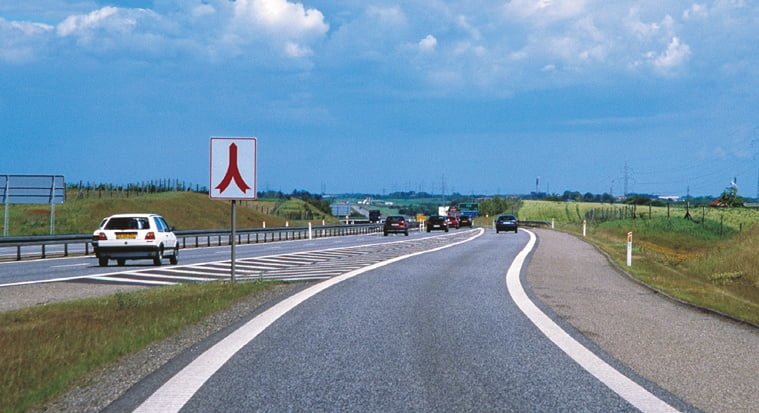
On this approach, the merge rule applies.
Approaching with lane change - how to do it
- At the beginning of the approach lane, you signal that you want to change lanes.
- Familiarise yourself with the visibility and access conditions.
- Are there road users coming from behind in the lane you want to change to?
- Adjust your speed to the length, incline or decline of the approach lane and to other traffic.
- Leave room for those in front to change lanes before you do.
- If it is not possible to drive in, you must, after informing the driver behind and warning the driver behind with a stop light, reduce speed and possibly stop with as long a clear access lane ahead as possible and then wait for the opportunity to drive in.
- Otherwise, change lanes according to the rules and conditions.
- In combined entry and exit lanes, keep an eye out for other road users signalling their exit.
Access with right of way - here's how to do it
- Familiarise yourself with the viewing and access conditions in good time.
- Are there road users coming from behind? How fast are they travelling - and how long is the distance?
- Customise the speed.
- Show other drivers that you will obey your right of way.
- Pull in when there's space.
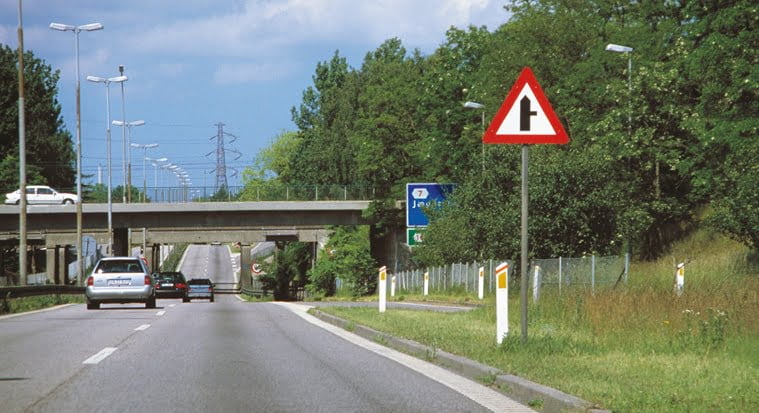
Here there is an acceleration lane that does not end in a merge rule, but where oncoming traffic must stop for traffic on the motorway before entering. Here you need to pay attention and take remedial action.
Driving on the motorway - here's how
- Stay in the centre of the right lane for a short time after the approach to get used to the road and traffic conditions before overtaking if necessary.
- Signal a lane change or other significant change in the vehicle's position to the side.
- Use only the left lane for overtaking.
- Keep an eye on access and exit conditions as far ahead as possible.
- Regularly check your speed on the speedometer and find the highest safe and legal speed on the route.
- Help drivers on approach lanes to merge by adjusting speed or changing lanes.
- If there are multiple lanes, you only change one at a time.
- Pay attention to lane stripes and traffic signs, especially those regarding lane assignment, lane progression, merging and exiting the motorway.
- In general, manoeuvre with a large safety margin on the motorway and orient yourself earlier and more thoroughly than on a regular road.
Exit - here's how to do it
- Orient yourself, signal and change lanes well in advance of the start of the exit lane.
- Is it safe to exit?
- Avoid slowing down on the motorway itself - especially if you have tailgaters close by.
- Exit the motorway as soon as the exit lane begins.
- Reduce speed according to changing conditions and speed limits.
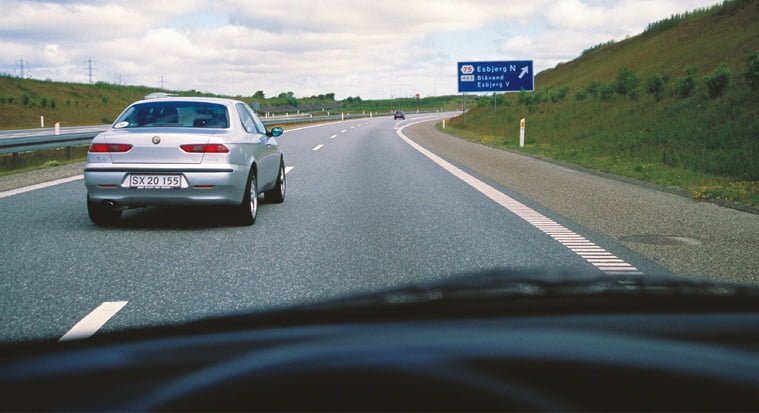
Dangerous situations can easily arise at exits, for example, if the driver in front suddenly wants to leave the motorway and pulls in front of other drivers without properly orientating themselves. The speed on the motorway is high and the risk of accidents is increased.
Exit via combined access and exit lane
Speed limit for large cars and cars with trailers.
On all motorways, the speed limit is 80 km/h. for:
- Trucks and truck-trailer combinations
- Buses over 3500 kg (with special authorisation, but 100 km/h)
- Cars with a trailer, e.g. caravan or trailer (with special authorisation, but 100 km/h)
- The speed limit applies on motorways unless otherwise indicated by signs.
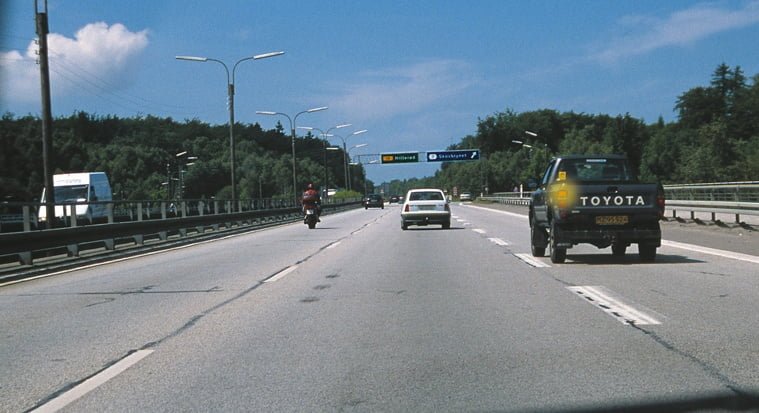
Leave room for those in front of you in the oncoming lane to pull in before you pull out. By accelerating sufficiently fast and driving close to the edge of the motorway, you show those behind you in the approach and exit lane that you want to get off the motorway, if at all possible.
Driving on an expressway
On an expressway, the same rules and road markings apply as on a motorway. But there are a few special things you need to know.
§ The maximum speed limit on the expressway and access and exit roads is 80 km/h.
Where the limit is locally raised up to 100 km/h, it is shown on traffic signs.
Towing is prohibited on an expressway.
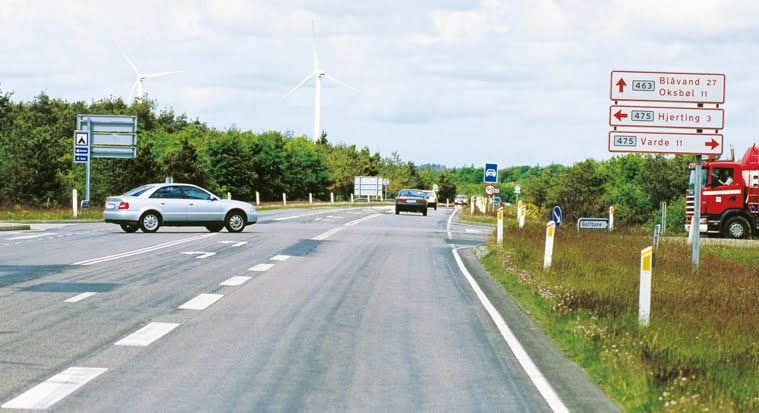
Risk conditions
There is rarely a central reservation on an expressway and therefore there is a risk of oncoming traffic driving off the centre of the road. In addition, there is cross traffic at intersections. Here, both pedestrians and motorists are allowed to cross the expressway.
17. driving alongside others
Risks and accidents
Dangerous situations can arise if the distance to cyclists and moped riders is misjudged. This can easily happen because they tend to swerve. The motorist
can also get stuck themselves due to slippery or greasy conditions. If a driver in heavy traffic has poor orientation and manoeuvrability because there are cars for both
sides, there's a dangerous tendency to just go with the flow. Finally, it's dangerous to look too long at running to the sides because you could pull out and
thus losing sight of the road ahead and behind. Accidents often happen when a motorist, moped rider or cyclist pulls in front of the car at an intersection. Other times, it's drivers cutting in front of or "squeezing" another road user.
Orientation and manoeuvring
You need to learn to recognise and manage the following hazards when driving alongside others:
- Driving at an angle to the rear, which can be hidden in blind spots.
- Signs that a motorcyclist will move forward between rows of cars in dense, slow-moving traffic.
- Vehicles in the neighbouring lane that tend to sway or are particularly sensitive to crosswinds.
- Vehicles ahead in the right lane that need to use more than one lane for manoeuvring, for example, trucks with a trailer or semi-trailer that need to turn right but pull slightly to the left before turning.
- Signs that steerable vehicles in dense, slow-moving traffic suddenly change lanes or turn left in front at intersections.
- Blind spots in general.
- The difference between crosswind and lee when passing large vehicles.
Driving alongside others - here's how
- Regularly and briefly check your distance to those travelling next to you.
- Especially in heavy traffic, look as far ahead in your own lane as possible. This will stabilise your steering and positioning - and you can prepare for a lane change well in advance.
- Look out for drivers who are legally passing on your right-hand side in heavy traffic. Be aware of cyclists and moped riders on your right who are overtaking you on the inside or those travelling slightly ahead in the lane next to you who want to change lanes or turn left in front of you at intersections.
- Only change lanes if necessary to turn, pass traffic or pull to the right to park.
- End up in the column in front. This may mean that you have to pass another vehicle on the right. In this case, it is legal because it is not an overtaking but a passing manoeuvre.
- Avoid placing yourself in other road users' blind spots by driving slightly forwards or backwards in relation to them.
- Keep a safe distance from road users and vehicles that tend to swerve.
Avoid "squeezing" cyclists, moped riders and motorcyclists by driving alongside them in the same lane or by passing stopped vehicles on the right-hand side.
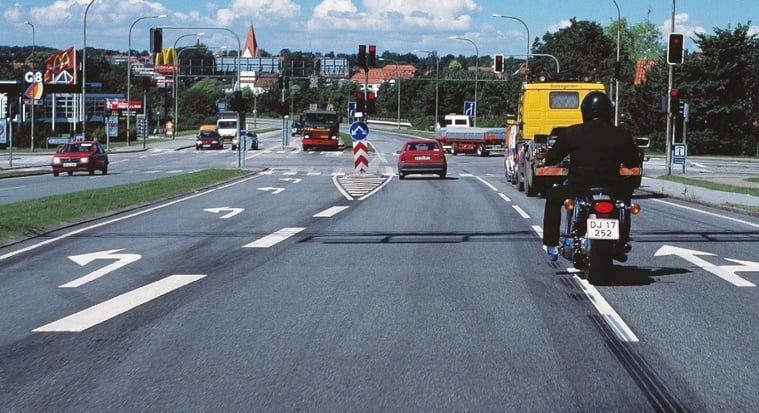
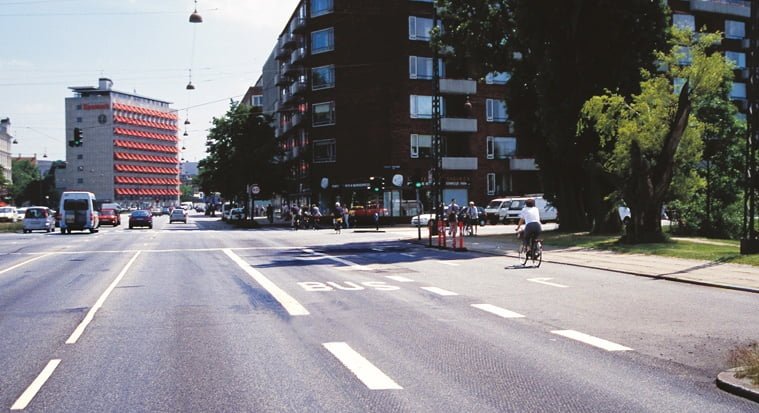
Bus symbol. The word BUS in a lane delineated by a continuous kerb line indicates that the lane is used by buses. If you need to turn right at this junction, cross the bus lane before the barrier line and position yourself behind the cyclist.
Bus and Taxi symbols
Bus.
Bus symbol (Q 42). The text BUS in a lane delimited by a continuous kerb line (Q 46) or double barrier line (Q 44) indicates that the lane may only be used by buses in service.
Taxi.
Taxi symbol (Q 44). The TAXI symbol in a lane delimited by a continuous edge line (Q 46) or double barrier line (Q 44) indicates that the lane may only be used by taxis. The symbol can be used together with the bus symbol (V 42) and indicates that taxis can choose to use the lane.
Taxi and zero-emission cars
TAXI.
The text "TAXI" on a green background shown in a lane bounded by a continuous edge line or a double barrier line indicates that the lane may only be used by taxis as zero-emission vehicles.
The symbol indicates that the taxi as a zero-emission vehicle can choose to use the lane.
The symbol can only be used for taxi ranks, indicating that the rank may only be used by taxis as zero emission vehicles.
The symbol can be used in conjunction with the Bus symbol and indicates that the taxi as a zero emission vehicle can choose to use the bus lane.
Zero emission cars.
The symbol in a lane bounded by a continuous edge line or double barricade line indicates that the lane may only be used by zero-emission vehicles.
The symbol indicates that the zero emission car can choose to use the lane.
The symbol can be used in conjunction with the Bus symbol and indicates that zero-emission vehicles can choose to use the bus lane.
Zero emission car is defined as:
Zero emission vehicles do not emit air pollution and CO2 emissions during operation, i.e. they are currently hydrogen or electric vehicles.
Not all bus lanes are approved for this type of zero mission driving. Here it is the individual municipality that must approve this.
That's why it's important to thoroughly familiarise yourself with the municipality's website and other public pages.
Test your knowledge
Cat. B - Sections 7.16 - 7.17
Select the questions you think are the right ones.
